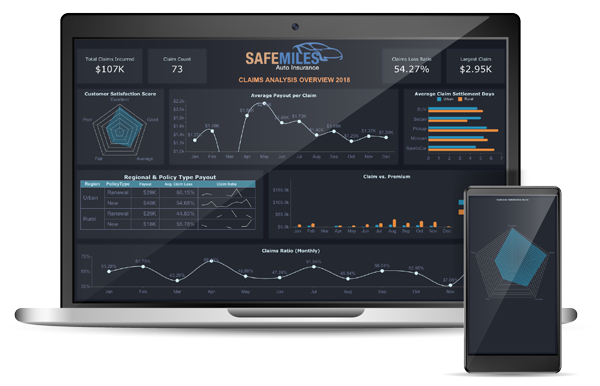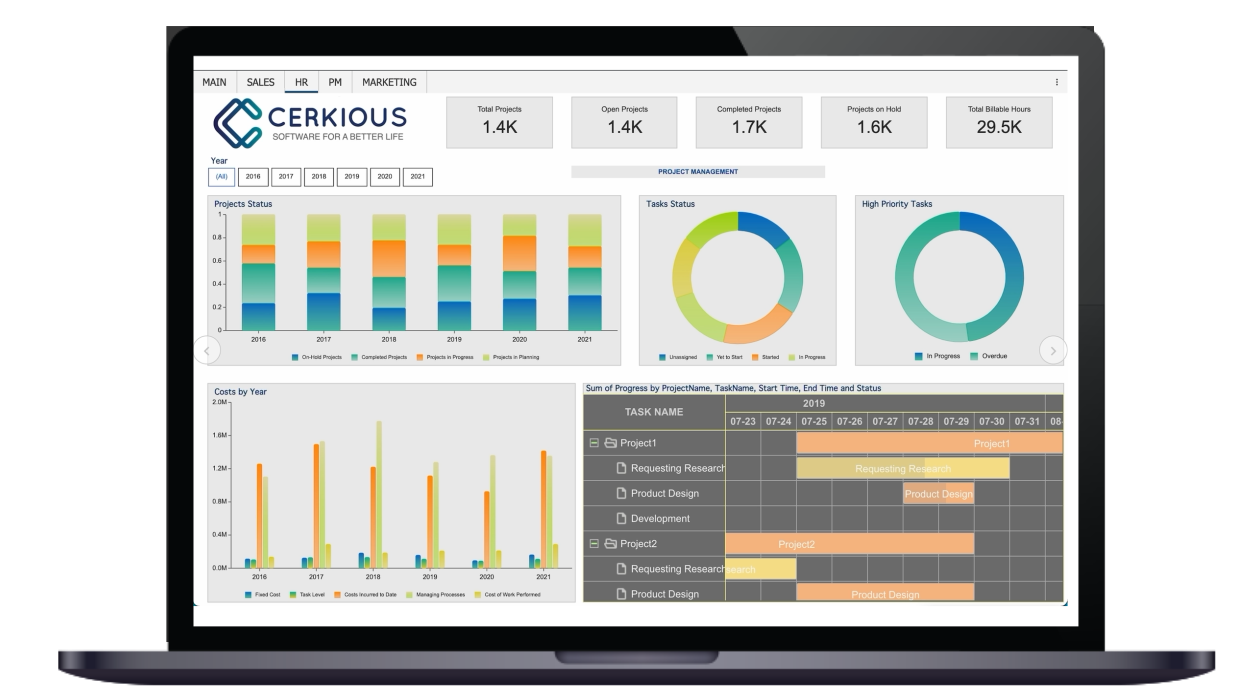According to Gartner, the future of work is here–and it looks radically different than anything we’ve seen in the past. Business intelligence (BI) is bridging the gap between talent capabilities and business strategies to create new possibilities.
This shift goes beyond any debate between the value of in-person and remote work environments, embracing the flexibility to be both–or neither, depending on what is needed in the moment. Perhaps your business intelligence solution is more than a data access point; maybe it’s the key to becoming more agile.
Imagine what is possible with real-time access to the data that you need wherever you are. The new frontier in business intelligence keeps you effortlessly connected–even while you’re out of the office. Here are a few ways that modern BI features are helping organizations achieve more agility through data accessibility:
- Mobile Accessibility
- Self-Service Analytics
- Real-Time Data Monitoring
- Scheduled Reporting
- Collaboration & Sharing
1. Mobile Accessibility -
Increasingly, business intelligence tools can be accessed from anywhere, anytime. Cloud-based BI is the fastest-growing segment in the industry. The majority (more than 90%) of organizations are using the cloud for at least one aspect of their business. About 30% of those businesses are already cloud-native, an additional 46% are actively pursuing a cloud-first strategy, and the rest have plans to be all-in on the cloud in three years.
This is important because making the switch to the cloud is the first step in making data accessible while you’re out of the office. A cloud-based BI platform can be accessed from any device with an internet connection, and many of these tools feature mobile-friendly interfaces that automatically adapt to smaller screen sizes.
2. Self-Service Analytics -
Being able to access data outside of the office is just one piece of the puzzle. In order to be able to use that data, the user interface needs to be designed for the non-technical crowd. This is where self-service analytics features come in handy, making BI accessible to everyone.
Traditionally, retrieving data from a BI platform has required a data science team to do the technical heavy lifting. The time and labor-intensive process of getting data from the solution left users stuck with a small sampling of canned reports–and limited visibility into the data they really needed.
With self-service analytics, everyday users–from the sales team to the CEO, can retrieve data sets and generate visual models to fit their specific needs.
These tools support:
- Better use of BI and IT resources
- Faster decision making
- Wider adoption of technology tools
A variety of self-service tools make data more accessible, which means that users can retrieve the information that they need even while they are out of the office. Self-service tools can provide data modeling capabilities, collaboration, data mapping, and predictive modeling, and more, providing near full-scale functionality from the convenience of a mobile device.
3. Real-Time Data Monitoring -
Did you know that 97% of business leaders have access to some form of real-time data? Making decisions that support growth often requires up-to-the-minute access to accurate data. Imagine if a sales manager was meeting with a high-profile client and, through casual conversation, they identified a big sales opportunity.
The client would be willing to make a sizable commitment, but they needed an answer right away. This is the kind of opportunity that could easily be missed if the sales manager had to wait until they were back in the office to check inventory availability.
With real-time data monitoring, sales staff can facilitate smoother transactions and secure bigger commitments, enabling growth even while you are out of the office.
4. Scheduled Reporting -
Another key feature that facilitates flexibility and keeps business leaders current while they are out of the office is scheduled reporting capabilities. Routine data sets, like sales volume by category or product line, can be scheduled and automatically delivered to inboxes.
While these reports are premade, they can be customized to detail whatever data is useful to the recipient. However, because they are generated and distributed through automation, the user can receive these reports from anywhere.
5. Collaboration & Sharing -
Collaborative features like the ability to annotate shared documents or dashboards are another feature that supports the asynchronous nature of remote work. Whether you’re working in a hybrid role from your home office or you are traveling halfway around the globe, modern BI solutions often include collaborative features that keep everyone on the same page.
Some platforms might integrate easily with tools designed for this type of collaboration. Some platforms provide self-service tools that automatically create reports, dashboards, or even apps that facilitate sharing data with external collaborators.
Common collaborative features might include:
- Workspaces
- Live chat
- Presenter modes
- Annotations
- Internal/external report sharing
Bonus: Alerts & Notifications
t’s no secret that when you’re out of the office, your attention is focused somewhere other than your business reports. Whether you are traveling for business or leisure, there is usually some other aspect of the trip that grabs your attention.
With modern BI solutions, it’s possible to stay on top of important activities without being glued to your phone. Features that provide alerts or notifications that are automatically triggered by a predefined event can give you some peace of mind.
Get notified when:
- There's a spike in web traffic
- Inventory drops below a critical level
- Performance KPIs trend below a specific threshold
- There's an anomaly that might require further investigation
- Any other mission-critical trigger event you choose
Final Thoughts on Modern BI Solutions to Help You Get More Done While You’re Out of the Office
Everyone is obsessed with the potential of data-driven decisions to transform their businesses. While business intelligence is certainly top-of-mind for your business strategy, you might not have considered it as a tool to enable accessibility while you’re out of the office.
However, many of the features that make your BI platform user-friendly in the office, like cloud-based storage, automated reports, self-service dashboards, and critical alerts, also facilitate access on the go.






























